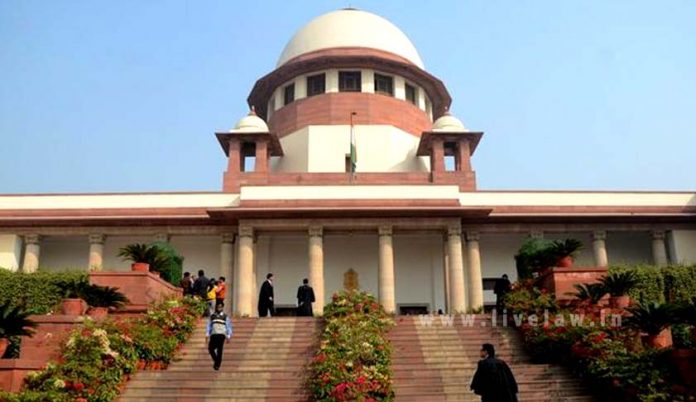This article has been written by Vikrant Shinde pursuing the Certificate Course in Advanced Supreme Court Practice: Drafting, Procedure, and Strategy from LawSikho.
Table of Contents
Introduction
The doctrine of colourability is the concept that when a legislature aims to do something that it is unable to do or is beyond its capability or authority, within the limitations of its government’s constitution, it colours the law with a concealed motive or purpose, allowing it to accomplish its original hidden goal. Legislation is termed as colourable when a legislature, having insufficient or absolutely no authority or legislative capability, enacts legislation that is so disguising that it misleadingly seems to drop within its legislative capability. It is clear that the purpose lies in the element that the legislature is unable to legislate directly; it cannot traverse outside its capability to legislate it in an indirect manner. This principle is called the Doctrine of Colourable Legislation. Through this article, the author seeks to delve into the scope and background of colourable legislation as well as its limitations through various case laws. The author has also analyzed several landmark decisions surrounding colourable legislation to understand the concept in its totality.
Background and scope of colourable legislation
The Doctrine of Colourable Legislation is founded on the Latin maxim “Quando aliquid prohibetur ex directo, prohibetur et per obliquum” which states that whatever is unable to be done directly, cannot also be done indirectly. The principle is applicable in the cases to decide problems of the capability to enact a law when a legislature exceeds its conferred authority and legislates upon anything indirectly which it is unable to do in a direct manner.
The circumstances where on the surface of the legislation, the subject- matter of the proposed legislation appears to come within the power of the legislature, but the resulting effect or purpose of the matter actually falls outside the purview and authority of the legislature. So in a way, the doctrine limits the overstretching or the exploitation of the allowed constitutional authority in a hidden manner. This is why the doctrine is also popularly known as “Fraud on the Constitution”. The scope of the doctrine is well-explained by the Supreme Court in the matter of K.C Gajapati Narayan Deo vs. State of Orissa 1953 AIR 375, 1954 SCR 1, the court stated:
“If the constitution of a State allocates the legislative controls among diverse bodies, which have to act within their respective domains marked by the constitution in certain legislative entries, or if there are restrictions on the legislative power in the shape of Fundamental Rights, the query arises as to whether the Legislature in a specific case has or has not, in the respect to the subject-matter of the law or in the method of enacting it, transgressed the limits of its constitutional authorities. Such transgressions may be patent, manifest or direct, but it may also be masked, covert or indirect, or and it is to this latter class of cases that the expression- colourable legislation has been applicable in judicial pronouncements.”
The Court further held, “The idea taken by the expression is that although seemingly, a legislature in passing a statute supposed to act within the borders of its authorities, yet in substance and in truth it contravened these authorities, the contravention being covert by what appears, on proper inspection, to be mere pretence or disguise.” The principle of the expression is that only the ingredient of an enactment is factual and not just its form. In case the issue of the enactment is outside the legislative purview of the legislature, then the law made in the disguise of that form cannot spare it from being condemned. The legislature ought not overstep the constitutional provisions by applying indirect methods to do so, otherwise, it renders in violation of Constitutional powers granted to them.
The background of the evolution of the doctrine of colourable legislation is in the colonial era when self-governance had inflated its existence in main parts of the British Empire and the Commonwealth. The legislative issues then were separated between the Central and Provincial divisions and to retain a tab on the powers allowed to these units, any enactment was confirmed against the doctrine of colourable legislation. The doctrine found its way to India from there that made use of the Canadian and Australian legal instances to accept the standard of this doctrine.
While deliberating on legislative competence and the scope of the courts to check colourable legislation in the constituent assembly of India, Alladi Krishnaswami Ayyar said; “It is an accepted principle of Constitutional Law that when a Legislature, be it the Parliament at the Centre or a Provincial Legislature, is invested with a power to pass a law in regard to a particular subject matter under the provisions of the Constitution, it is not for the Court to sit in judgment over the Act of the Legislature. Of course, if the legislature is a colourable device, a contrivance to outstep the limits of the legislative power or to use the language of private law, is a fraudulent exercise of the power, the Court may pronounce the legislation to be invalid or ultra vires.”
Limitations of the Doctrine
A principle was established in the case of Ram Krishna Dalmia vs. Shri Justice S.R. Tendolkar & Ors., stating:
“That there is always an assumption in favor of the constitutionality of an enactment and the onus is upon him who assaults it to show that there has been a clear contravention of the constitutional doctrines.” which shows that the particularly conferred authority to the legislature defines its capability and with this arises its authority to legislate even on supplementary and additional matters. Therefore, for the application of this principle, the contravention by the legislature of its constitutional authority should be ancillary, hidden, or masked and not too direct, obvious, or apparent.
So, clearly, not all acts of the legislation shall be subject to the applicability of the doctrine of colourable legislation, there are limitations to its applicability as follows:
- It is inapplicable in cases where the authority of the legislature is not fettered by the constitutional provisions.
- It does not apply to cases of subordinate legislation.
- The intention of the legislature while determining an enactment is not relevant to determining its validity.
- There shall always be a presumption of constitutional validity in favor of the enactment.
Landmark judgments under the Doctrine of Colourable Legislation
i) Janapada Sabha Chhindwara v. Central Provinces Syndicate Ltd.
In this case, the question of the validity of impugned legislation was challenged, to which the Supreme Court observed that with the modification brought to the Act, the legislature has tried to set aside or override the decision of the court that is barred under Constitutional outline. Article 141 of the Constitution that obviously places the authority of the Supreme Court for all its order to be obligatory on all Indian courts evidently implies that the legislature in no capacity can say that the affirmation made by the court was void, vague, or flawed either as a precedent or between the parties.
ii) State of Tamil Nadu v. M. Rayappa Gounder
In this case, the State of Tamil Nadu enforced to reevaluate a few of the theatre owners who were held to have evaded the
entertainment tax. When the matter was heard by the High Court, it was ascertained that the particular legislation Madras Entertainment Tax Act 1939 did not let the government consider reassessment, and the Act was declared unconstitutional. The state govt. preferred an appeal before the Supreme Court to which the court pronounced that the effect of this provision was to override the HC decision and it was not envisioned to change the law retrospectively.
iii) State of Bihar v. Kameshwar Singh
This is the single landmark case where the stature has been declared evidently void on the ground of being colourable legislation. The petitioner, in this case, had challenged the rationality of the Bihar Land Reforms Act 1950 on the ground that the act was apparently intended to place the principle of compensation but in fact, it had failed to lay down any such doctrine. This was purported as the hidden effort to deprive the petition of his right to benefit. The court also upheld the unconstitutionality of the Act.
iv) Shri Prithvi Cotton Mills v. Broach Borough Municipality
“Granted legislative competence, it is not adequate to affirm just that the verdict of the court shall not be binding for that is equivalent to retreating the decision in application of judicial power which the legislature ceases to hold or exercise. A Court’s decision is always binding unless the circumstance on which it is based is so basically changed that the verdict could.”
The above-mentioned matters put forward that the expressly conferred authorities to the legislature to legislate on any question are comprehensive of incidental and ancillary authorities in regards to the suitable enforcement of that law. Therefore, there is also a requirement for the doctrine of colourable legislation to regulate legislative accountability with regard to crucial alterations in the legislative roles.
Conclusion
The Constitution of India has brought about well-founded dissemination of powers between Parliament and State Legislatures and every one of them is obligated to act within its confined sphere. The question of legislature competency often ascends when they seek to transgress the limits enforced by the Constitution but these contraventions are sometimes direct or patent. The Doctrine acts as a fundamental device of the Judiciary to monitor the legislative authorities endowed on the Union and State Governments and determine the validity of the legislation in question.
References
- https://www.legalbites.in/doctrine-of-colourable-legislation/.
- https://lexlife.in/2021/02/04/constitutional-law-doctrine-of-colourable-legislation/.
- http://www.legalservicesindia.com/law/article/1556/10/Doctrine-of-Colourable-Legislation-.
Students of Lawsikho courses regularly produce writing assignments and work on practical exercises as a part of their coursework and develop themselves in real-life practical skills.
LawSikho has created a telegram group for exchanging legal knowledge, referrals, and various opportunities. You can click on this link and join:
 Serato DJ Crack 2025Serato DJ PRO Crack
Serato DJ Crack 2025Serato DJ PRO Crack











 Allow notifications
Allow notifications



